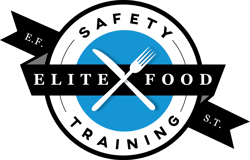
Cooking at home can be a delightful adventure, especially when you mix in some essential food safety tips to keep everyone healthy and happy!
The Great Kitchen Clean-Up: A Spotless Beginning
Before we dive into the deliciousness, let's start with a clean slate—literally! Begin by washing your hands thoroughly with soap and water for at least 20 seconds. Sing your favorite song to make it fun! Next, make sure all your countertops, cutting boards, and utensils are sparkling clean. A clean kitchen is a happy kitchen, and it helps keep those pesky germs at bay.
Remember, cross-contamination is the enemy. Use separate cutting boards for raw meat, poultry, and seafood, and another for fruits and veggies. This simple step can prevent harmful bacteria from spreading and keep your ingredients fresh and safe.
Fresh and Fabulous: Choosing the Right Ingredients
When it comes to cooking, the fresher the ingredients, the better the taste—and the safer the meal! Always check the expiration dates on your ingredients and give them a good sniff test. If something seems off, it's better to be safe than sorry. Opt for locally sourced fruits and veggies when possible, as they're not only fresher but also packed with nutrients.
And don’t forget to wash your produce! Even if it looks clean, a quick rinse under running water can remove any lingering dirt or pesticides. For extra safety, use a vegetable brush for those hard-to-clean items like potatoes and carrots.
The Cutting Edge: Knife Skills and Safety
Now that we have our ingredients, it's time to chop, slice, and dice! A sharp knife is a safe knife, so make sure your knives are well-maintained. Dull knives can slip and cause accidents. Always use a stable cutting board and keep your fingers tucked in to avoid any nicks or cuts—think of it like a mini finger dance!
For added safety, keep a first-aid kit handy in the kitchen. It's better to have it and not need it than to need it and not have it. Plus, it adds a sense of preparedness to your culinary adventures!
Cook It Right: Temperature Tips and Tricks
Cooking your food to the right temperature is crucial for safety and flavor. Invest in a good food thermometer to ensure your meats are cooked to perfection. Chicken should reach 165°F, while ground beef should hit 160°F. Trust us, your taste buds and your tummy will thank you!
For those slow-cooked dishes, make sure you keep your food out of the 'danger zone' (40°F - 140°F) where bacteria thrive. Keep hot foods hot and cold foods cold to ensure a safe and tasty meal.
Leftovers Love: Storing and Reheating with Care
Ah, leftovers—the gift that keeps on giving! To keep your leftovers safe, cool them down quickly and store them in airtight containers. Label them with the date so you know when they need to be eaten. Remember, leftovers are best enjoyed within 3-4 days.
When reheating, make sure your food reaches an internal temperature of 165°F. Stirring your food halfway through heating can help ensure even warmth. And there you have it—a delicious, safe meal ready to enjoy all over again!

.png)
-2.png)
-2.png)
.jpg)
